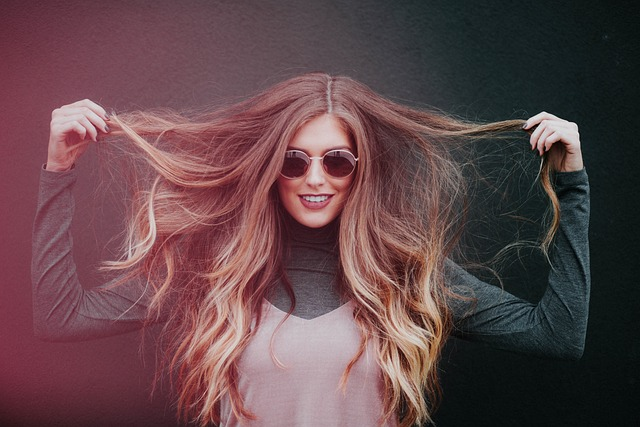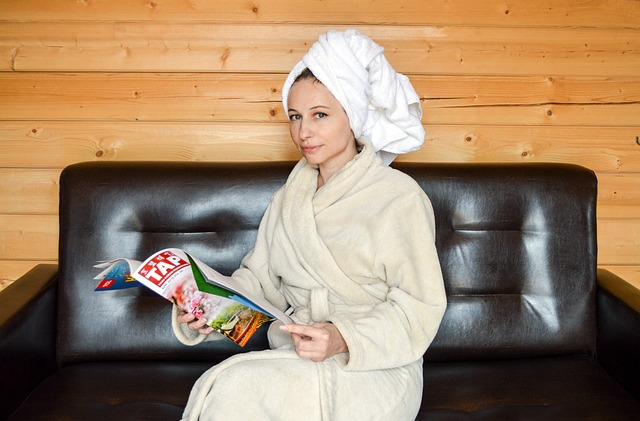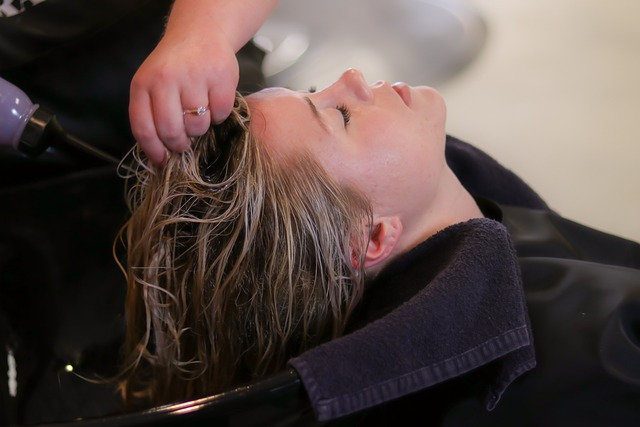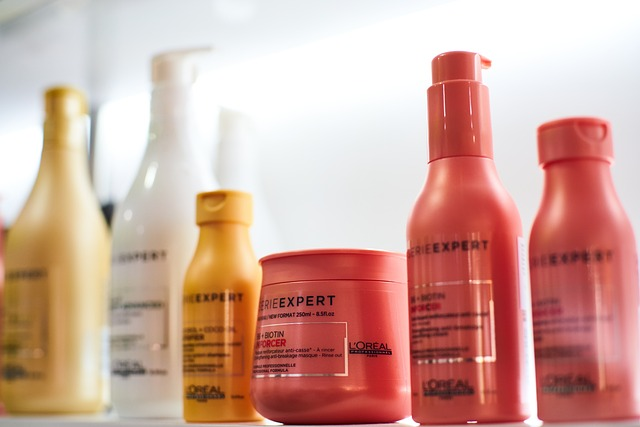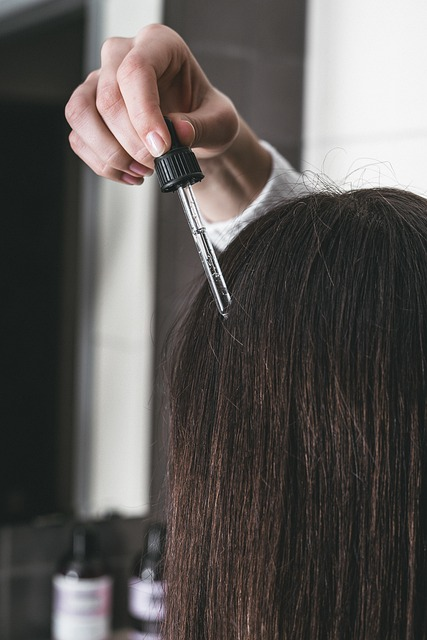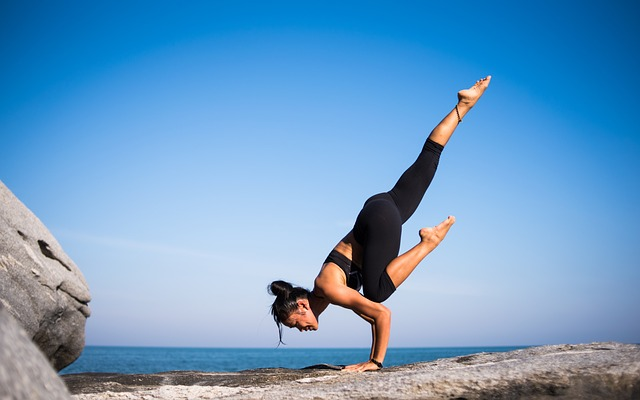“How to Take Care of Your Hair: Tips for Healthy and Radiant Hair”
Are you looking for ways to keep your hair healthy and radiant? If so, this article is for you! Here, we will offer a comprehensive hair care routine that covers everything from shampooing to styling techniques.
We’ll discuss tips on how to nourish, protect and repair strands of all types and textures, as well as advice on which products to use for your individual needs. Whether you have chemically treated or natural hair, these guidelines are sure to help you reach your hair health goals!
Hair Washing
Having clean and healthy hair should be a priority for everyone. Proper hair washing is one of the most basic steps in a hair care routine and is essential for maintaining healthy hair. Washing your hair helps to remove dirt, sweat, and buildup from the scalp and hair and helps prevent it from becoming dry and brittle.
The type of cleanser that you use is important for healthy hair. Sulfates are a type of detergent found in many shampoos and are often used to create lather and remove buildup from the hair and scalp. However, sulfates can be harsh and strip essential oils from hair, resulting in damage and breakage. Alternatives to sulfates are gentle cleansers such as sulfate-free shampoos and clarifying shampoos which help to remove buildup without stripping the hair. Additionally, moisturizing shampoos are beneficial for dry hair as they help to replenish lost moisture.
Using the same brand of shampoo and conditioner is important for the health of your hair. This is because each brand has its own unique formula that is designed to work with the other products in their line. Using products from the same brand helps to ensure that your hair will be getting the right balance of ingredients to achieve the best results.
Rinsing the conditioner off with cold water is a beneficial step in the hair washing process. Cold water helps to strengthen hair and add shine. Additionally, cold water helps to seal the cuticles of the hair, reducing the risk of split ends.
How Often Should You Wash Your Hair?
How often you should wash your hair depends on your hair type. Those with dry hair should wash their hair no more than twice a week, using a gentle shampoo to avoid over-washing. Those with oily hair can wash their hair more often, but should avoid washing their hair every day as this can strip the hair of its natural oils and cause damage.
Those with normal hair can wash their hair every other day in the winter and every day in the summer when exposed to more sun. It is also important to use a wide toothed comb to detangle wet hair before washing to prevent breakage. Additionally, avoid washing your hair with hot water as this can cause heat damage and leave your hair dry and brittle.
What Shampoo Should You Use?
The type of shampoo you use matters. Sulfate-free shampoos are gentle, removing buildup without stripping away essential oils. Clarifying shampoos help those with oily hair by getting rid of scalp and hair buildup. Moisturizing shampoos replenish lost moisture for those with dry hair.
For normal hair types, a combination of the above is best. Different types may require different shampoos – so it’s important to find the one that works for you! Here are some recommendations. Fine hair needs a light volumizing shampoo to add body and lift; thick hair benefits from a moisturizing shampoo to soften and shine; curly locks look great when using sulfate-free shampoo to define curls.
How to Wash Your Hair Properly
Washing your hair – is it really that important? Absolutely! To keep your hair healthy, start by drenching it in lukewarm water like a sponge. Generously apply shampoo and massage it into your scalp with your fingertips like you’re kneading dough. Rinse the shampoo out of your hair and then conditioner – focus on the ends of your hair which are more prone to damage, as if they were fragile flowers.
Rinse the conditioner out of your hair with cold water to seal the cuticles and add shine – think of it as giving yourself a refreshing shower after a long day. Once you’ve rinsed thoroughly, air dry or blow dry for extra volume. But beware: over-washing can strip away natural oils from your locks so don’t go overboard! Give yourself an at-home spa treatment once a week with deep conditioning for maximum health benefits.
Hair Conditioning
One of the most important steps in any hair care routine is conditioning your hair, like giving a thirsty plant water. But what should you consider when choosing a conditioner? Knowing your hair type and the benefits of different formulas is key. For fine hair, opt for lightweight conditioners that won’t weigh it down; thick, curly locks need deep conditioning to nourish and hydrate curls; oily strands require special formulas; damaged tresses need repair products; and color-treated manes demand protection. So which conditioners are best for each type? L’Oreal EverPure Moisture Shampoo and Conditioner for fine hair, Briogeo Don’t Despair Repair! Deep Conditioning. Mask for thick curls, Klorane Nourishing Conditioner with Mango Butter for oily types, Redken Extreme Length Primer and Sealer to fix damage, TRESemmé Color Revitalize Protection Conditioner to protect color-treated locks – the list goes on! With so many options available today, finding the right one has never been easier.
When Should You Condition Your Hair?
For most hair types, is it really necessary to condition your hair every time you shampoo? Like a thirsty plant in the desert, conditioning helps lock in moisture and protect your hair from damage. If you have dry hair, consider giving it an extra drink of hydration by conditioning more often than usual – even once a week for a deep conditioning treatment.
When applying conditioner, make sure to follow the instructions on the product packaging. Massage it into damp, freshly washed hair and leave it in for 10 minutes up to an hour depending on what type of conditioner you’re using. Don’t forget to rinse thoroughly with a wide-toothed comb so that all strands are evenly coated!
Once done, air dry or blow dry your locks as desired – and voila! You’ve just given yourself some much needed TLC for beautiful healthy hair.
What Conditioner Should You Use?
As previously mentioned, it is important to choose a conditioner that is suited to your hair type. If you have fine hair, you should opt for a lightweight conditioner that won’t weigh down your hair. If you have thick, curly hair, you should opt for a deep conditioning formula that will help to nourish and hydrate your curls. There are also conditioners specifically formulated for oily hair, damaged hair, and color-treated hair.
For fine hair, try L’Oreal EverPure Moisture Shampoo and Conditioner, OGX Coconut Miracle Oil Conditioner, or Maui Moisture Heal and Hydrate + Shea Butter Conditioner. For thick, curly hair, try Briogeo Don’t Despair, Repair! Deep Conditioning Mask, SheaMoisture Manuka Honey & Yoghurt Hydrate + Repair Protein-Strong Treatment, or Pantene Pro-V Repair and Protect Conditioner.
For oily hair, try Klorane Nourishing Conditioner with Mango Butter, L’Oréal Paris Elvive Extraordinary Clay Rebalancing Conditioner, or Dove Oxygen Moisture Conditioner. For damaged hair, try Redken Extreme Length Primer and Sealer, Matrix Total Results Miracle Creator Multi-Tasking Hair Mask, or Oribe Gold Lust Repair & Restore Conditioner.
For color-treated hair, try TRESemmé Color Revitalize Protection Conditioner, Kerastase Reflection Chroma Captive Radiance Enhancing Conditioner, or Redken Color Extend Magnetics Conditioner.
How to Condition Your Hair Properly
Properly conditioning your hair is a must for maintaining mane health. To get silky smooth locks, here’s what you should do: Start by shampooing your hair and rinsing it like a river. Then apply the conditioner to your wet tresses – focusing on the mid-lengths and ends – massaging it in with your fingertips like a massage therapist. Use a wide-toothed comb to work the conditioner through each strand until it evenly coats them all around. Let the conditioner sit for as long as indicated on its packaging before rinsing off with lukewarm water (avoid overdoing it!). Finally, use a blow dryer to style your hair and voila! You’ll have healthy hair that looks great too! Plus, nourishing natural oils such as coconut oil and argan oil can help protect against sun damage or heat damage – giving you an extra layer of protection from head to toe!
Hair Drying
Drying hair is a crucial part of any hair care routine, like the cherry on top of an ice cream sundae. There are two main ways to dry your locks: air drying and blow drying. Both have their own pros and cons that you should consider when deciding which method is best for your hair type and lifestyle – why take the risk?
It’s important to remember not to comb or sleep in wet hair; it’s more fragile than dry hair and can easily be damaged, such as split ends. Instead, use a soft towel or an old t-shirt to remove excess moisture from the strands. After all the dripping has stopped, use a wide-toothed comb gently from roots to tips to detangle your mane.
Air Drying
Air drying is a process of letting your hair dry naturally, without any tools or products. It’s an excellent way to avoid the damaging effects of heat and intense UV rays in winter months. To air dry, simply wash your hair with shampoo and conditioner, then use a towel or t-shirt to remove excess moisture. You’ll be left with healthy locks that look beautiful!
Blow Drying
Blow drying is the process of using a blow dryer to dry your hair. With various sizes, heating settings and attachments like diffusers and round brushes, it can be beneficial in reducing frizz, adding volume and creating a smooth finish.
But remember: use low heat setting to avoid heat damage! And don’t forget to deep condition before you start – this will keep your hair hydrated and healthy.
Do you have fine hair? Then limit how often you use the blow dryer if you want gorgeous curls that stay healthy!
Hair Styling
Hair styling is a beauty ritual that can help you achieve your desired look, as well as keep your hair healthy and gorgeous. But beware – heat styling can be like playing with fire if not done correctly. To minimise potential damage, it’s important to use the right tools and techniques.
A thermal protectant spray is like an armor for your hair – it helps protect from heat damage. When using a blow dryer or other styling tool, make sure to set the heat level on the lowest setting possible – too much heat will fry your locks! A wide-toothed comb should also be used when detangling wet hair before drying; this will help prevent breakage and damage. And remember: never use heat styling tools on wet hair – this could cause even more harm than good!
Heat Styling
Heat styling is a fabulous way to get beautiful curls and a sleek finish. But it’s important to be aware of the potential dangers, such as heat damage and breakage.
From curling irons to flat irons and blow dryers, there are plenty of tools that can help you achieve your desired look – adding volume, creating curls or giving you a smooth finish.
Before styling with heat, make sure to use a thermal protectant spray for extra protection against heat damage. And always opt for the lowest temperature setting possible – too much heat can cause serious harm!
Natural Styling
Natural styling is like a shield for your hair, protecting it from heat damage and breakage. Braiding, twisting, and buns are all great techniques to achieve beautiful curls without the need of hot tools. Coconut oil, argan oil, and jojoba oil can nourish your locks while styling. Applying a deep conditioner before styling is also key in keeping your hair healthy.
A wide-toothed comb is essential when styling – especially for those with fine or oily hair – as it helps evenly distribute shampoo and conditioner during washing. By following these tips, you’ll be sure to have luscious locks that will stay healthy! Hair care should always be done with caution so you don’t end up damaging your mane instead of maintaining it!
Hair Care Products
Hair care products are an essential part of any hair care routine, and they can help boost the health of your locks. From shampoos to oils, masks and serums, each product has its own unique benefits that can improve the condition of your mane. But beware! Taking certain supplements for beauty over extended periods may be linked to an increased risk of cancer, according to a 2020 study by the National Institutes of Health. Dying, perming or other treatments? Not so great either! These processes can cause hair strands to become brittle and thin, leading to breakage and even hair loss. So it’s best to use mild natural products when treating your hair – avoid harsh chemicals at all costs! Micronutrient deficiencies also play a role in affecting our hair health; biotin, vitamins A & C, as well as zinc deficiencies can lead to less healthy nails and skin plus thinning or brittle strands. Eating a balanced diet full of leafy greens, sweet potatoes and other beverages is key for getting those essential nutrients needed for healthy hair growth.
Oils
Oils are an essential part of any hair care routine, providing nourishment and protection for the scalp and strands. Almond, coconut, and jojoba oil are great for all hair types as they contain essential fatty acids that promote healthy growth. For those with oily hair, lighter oils such as grapeseed can help reduce excess production in the scalp. To use oils effectively, apply a few drops to damp or dry hair then massage into the scalp and throughout your locks. Oils can also be used alongside other products like shampoos and conditioners to give an extra boost of nourishment.
Masks
Masks are a magical way to give your hair a nourishing boost. From deep conditioning masks to protein-packed formulas, there’s something for every type of stress. To keep your curls and locks looking luscious, apply a mask once a week like clockwork.
When you’re ready to get started, make sure the product is evenly distributed from scalp to ends. Let it sit for 10-15 minutes before rinsing with cold water – this will help lock in all those nutrients and leave your hair feeling healthy and happy!
Serums
Serums are another great hair care companion, like a trusty sidekick. Blended with natural oils and vitamins such as Vitamin C and E, serums can help restore your locks to their former glory. A few drops applied to damp or dry hair – focusing on the ends and avoiding the scalp – will help repair heat and chemical damage, bring back shine, and prevent hair loss. For those with fine tresses, using a light serum is key to avoid weighing down delicate strands. So why not give serums a try?
Diet and Exercise
Good nutrition and regular exercise are essential for keeping your hair, skin and nails in tip-top shape – as well as for overall health and wellbeing. Eating a balanced diet with a variety of foods helps to provide the vitamins, minerals, and other nutrients needed for healthy hair, skin, and nails. Vitamins A, E and D; iron; healthy fats; carbohydrates; protein – all these components are necessary to keep your body functioning properly. Vitamin B6, an antioxidant. A keeps your skin looking its best by producing natural oils that protect the scalp while nourishing each strand of hair. Vitamin E promotes circulation while protecting against free radical damage. Vitamin D improves hair growth and strengthens nails while iron prevents breakage in locks of hair. Healthy fats like olive oil or omega-3 fatty acids help maintain beautiful skin and strong nails while complex carbohydrates give you energy to grow luscious locks!
Fruits and vegetables are packed with antioxidants that protect our skin from harm’s way – so make sure you’re eating plenty of dark leafy greens! Whole grains also play an important role in maintaining healthy skin & nails since they provide us with essential vitamins & minerals too! Protein sources such as lean meats (chicken/fish), legumes (beans/lentils), eggs & dairy products give strength & elasticity to our mane, complexion & claws alike! Avocados contain vitamin A and E, which can be mashed into guacamole or spread on toast – yum! Nuts like almonds or walnuts have antioxidant vitamin E, which is great for fighting off free radicals too. Omega-3 fatty acids can be found in fish oil supplements or plant based sources such as flaxseed oil – perfect if you’re vegan but still want glowing results!
It’s not just what we eat though – it’s how much sun exposure we get too! We need enough sunlight to produce vitamin D, but don’t go out during peak hours (10am-4pm) when UV rays are strongest – plan ahead instead by basking early morning or later evening when the sun isn’t so harsh on our delicate dermis. Darker skins may require more time outdoors than lighter ones, so adjust accordingly depending on your own needs here folks.
In order to maintain a balanced diet, it’s important to eat a variety of foods that provide essential nutrients – vegans included! In fact according to one 2011 study taking omega 3 supplements may even reduce UV ray damage. So if you’re looking for extra protection, this could be worth considering alongside dietary changes. Most people get enough nutrition from their diets alone, however drastically reducing calories can lead to deficiencies especially when proteins & fats are concerned. Oysters anyone? 97 milligrams per cup? Wowzers!
To sum up, proper nutrition + regular exercise = happy hairskinsnails! Eating a balanced diet full of fruits/veggies/whole grains/protein rich foods provides us with those vital vitamins/minerals plus other goodies needed for optimum healthiness. Sun exposure is key too along with maybe some additional supplementation if desired. But most importantly remember everyone has different requirements depending on their individual circumstances so listen carefully before making any drastic decisions.
Summary
At the end of the day, taking care of your hair involves a few different steps to maintain beautiful and healthy locks. Washing your hair properly and at the right frequency with the right shampoo for your needs is important to prevent damage. Whenever you wash, make sure to condition, too, and use natural oils such as coconut and argan oil to deeply hydrate and nourish.
When drying your hair, do so with caution, first preferring air-drying, then using a blow dryer and heat protectant on low settings. Hair styling can be done without damage if the right tools and techniques are employed, but natural is always best. Hair care products such as serums, oils, and masks should be used moderately to avoid overdoing it and risking getting cancer, hair loss, or micronutrient deficiencies.
Lastly, diet and exercise are essential for overall health, which includes hair, nails, and skin. Following these tips will ensure radiant and healthy hair no matter the type.
Frequently Asked Questions
What is a good hair care routine?
A good hair care routine involves staying mindful of your hair type and washing it every 3-4 days with a moisturizing shampoo. Use lukewarm or cold water to wash and rinse, and keep up with regular trims and deep conditioning treatments to keep your hair healthy and vibrant.
What are the signs of healthy hair?
Strong, glossy hair is a sign of good health. To ensure healthy hair, pay attention to signs like minimal breakage and shedding, moisture richness, shine, ability to comb without breakage, and lack of dandruff.
Maintaining healthy habits and using the right products can help you achieve perfect locks.
How can i get good hair naturally?
To maintain healthy hair naturally, focus on following a balanced diet, washing your hair regularly, and protecting it from damage. Additionally, try switching up your shampoo and conditioner with natural products, massaging your scalp with essential oils, avoiding heated styling tools, and trimming your hair as needed.
How often should i wash my hair?
It is recommended to wash your hair every 2-3 days, depending on the type of hair and the care treatments performed. Those with oily or processed hair may need to shampoo more frequently, while those with naturally dry hair should aim to shampoo less often, as over-washing can strip your scalp and hair of natural oils.
Shampooing too often can lead to dryness, breakage, and split ends. To keep your hair healthy, use a gentle shampoo and conditioner, and avoid using too much heat or styling products.
How can i get healthy skin hair and body?
To achieve a healthy and glowing complexion, hair and body, start by following a nutritious diet, drinking plenty of water, complimenting regular exercise and embracing self-care practices such as using natural skin and hair products and getting adequate rest.
Finally, don’t forget to visit your doctor to make sure you’re in top shape!

